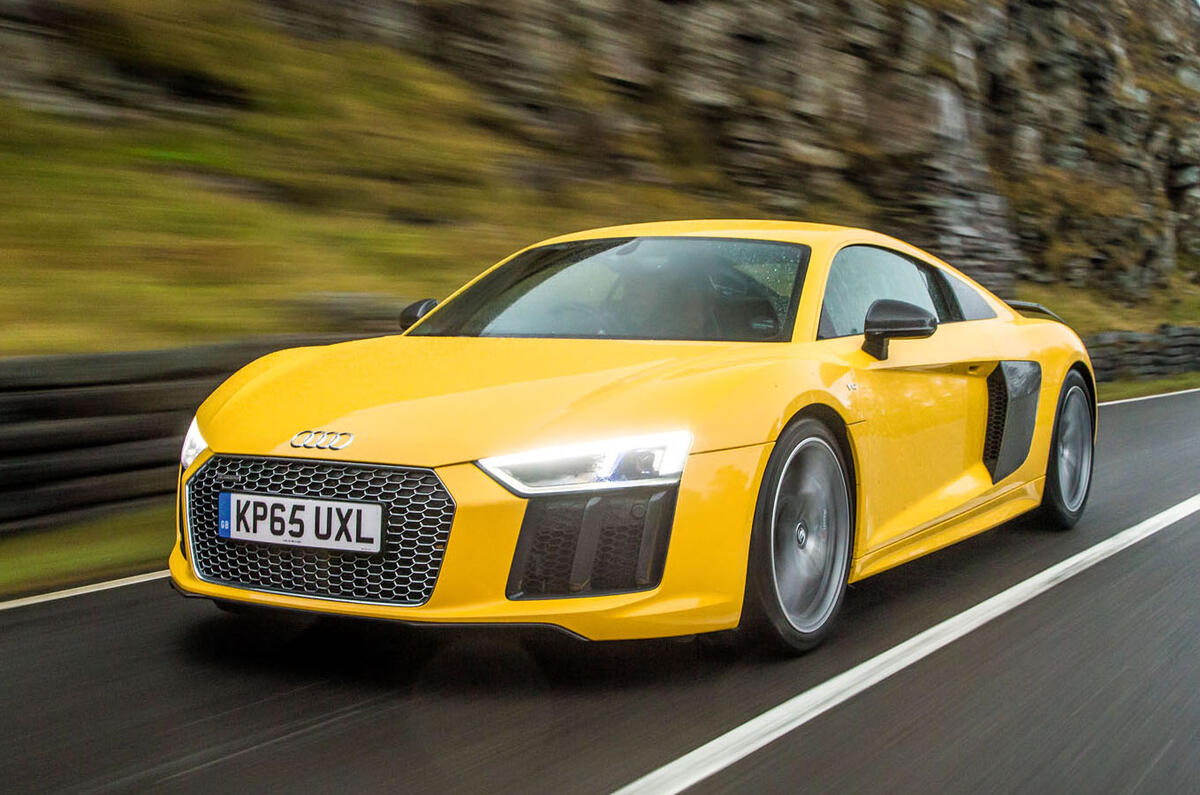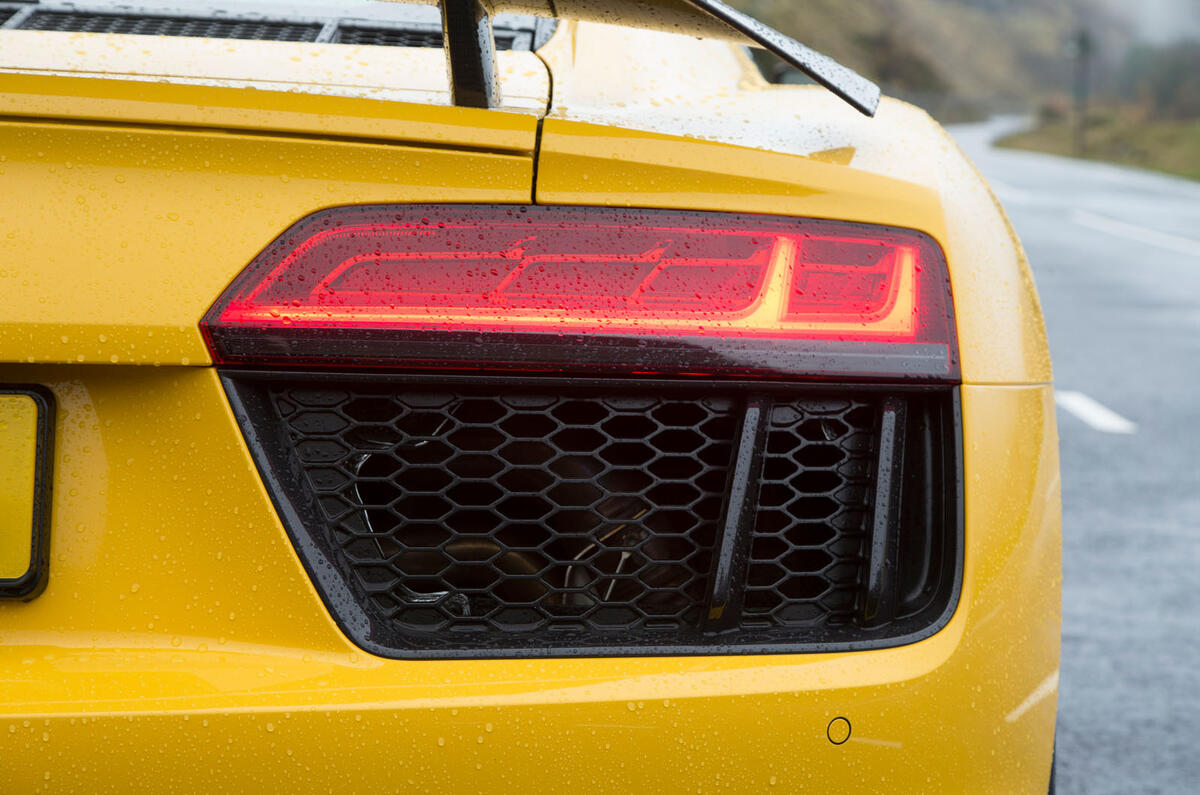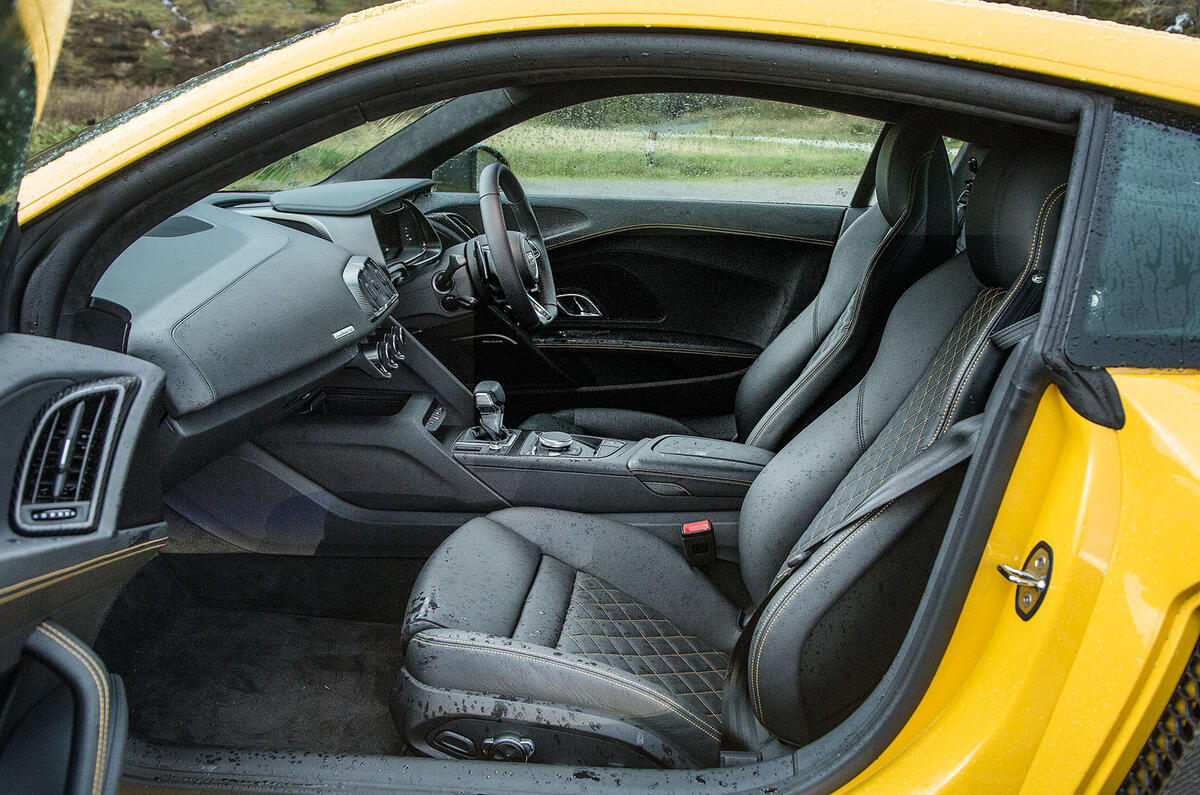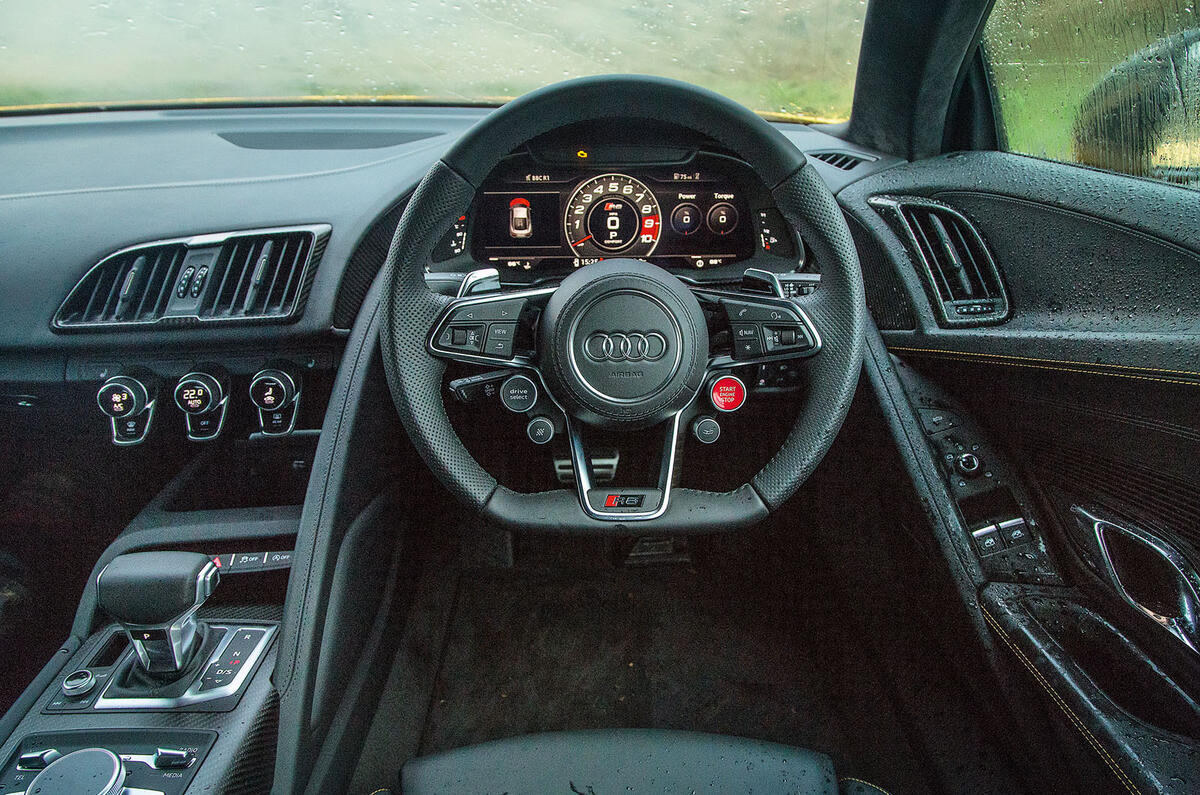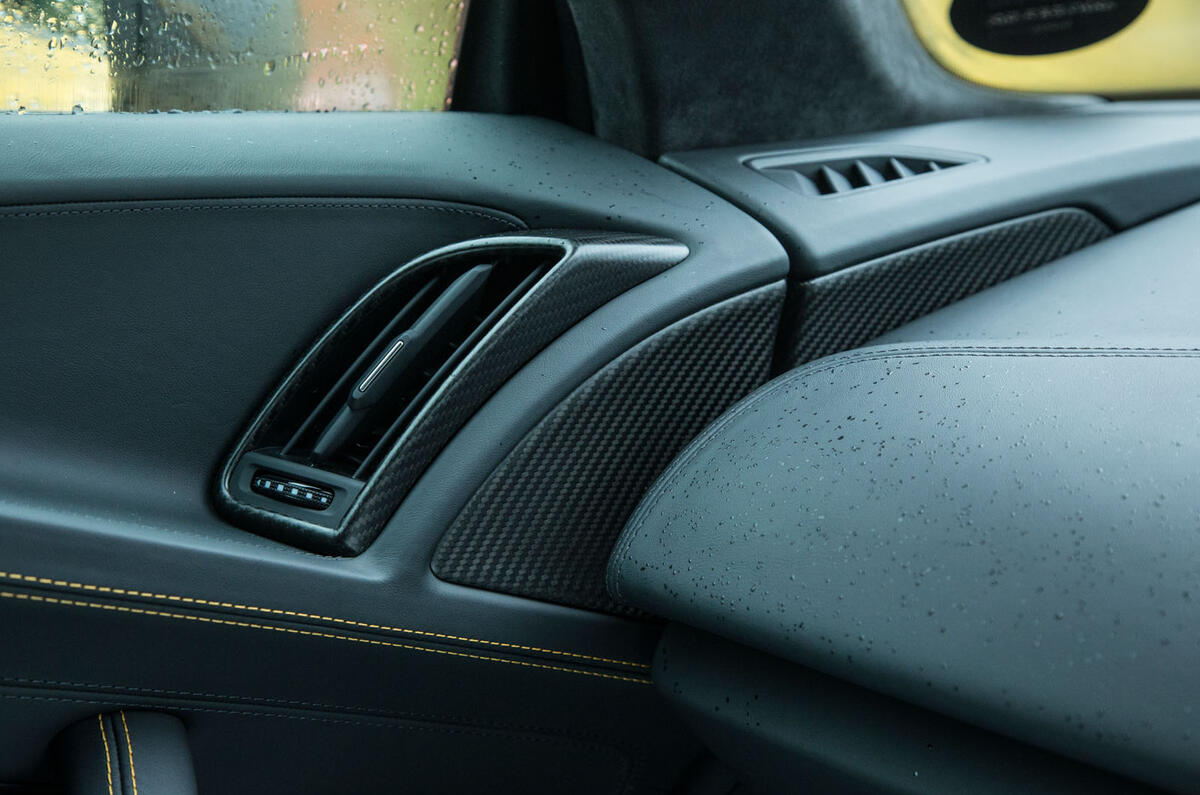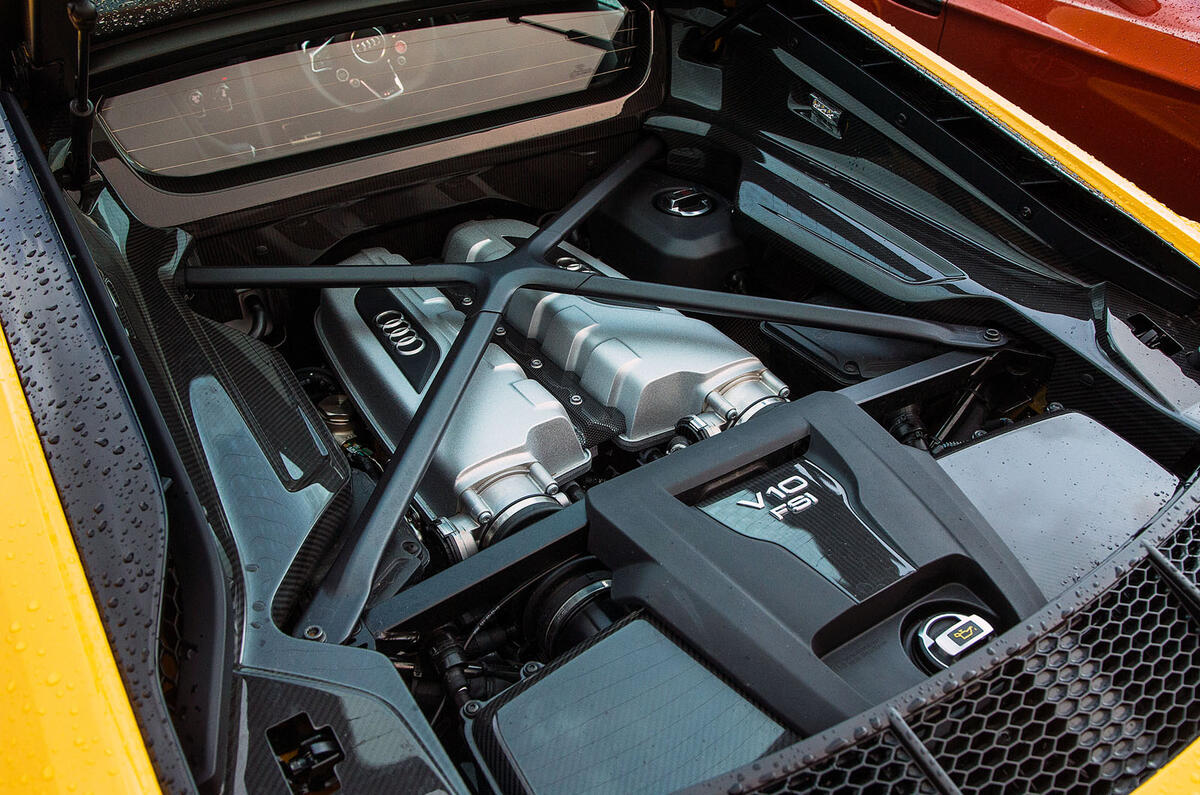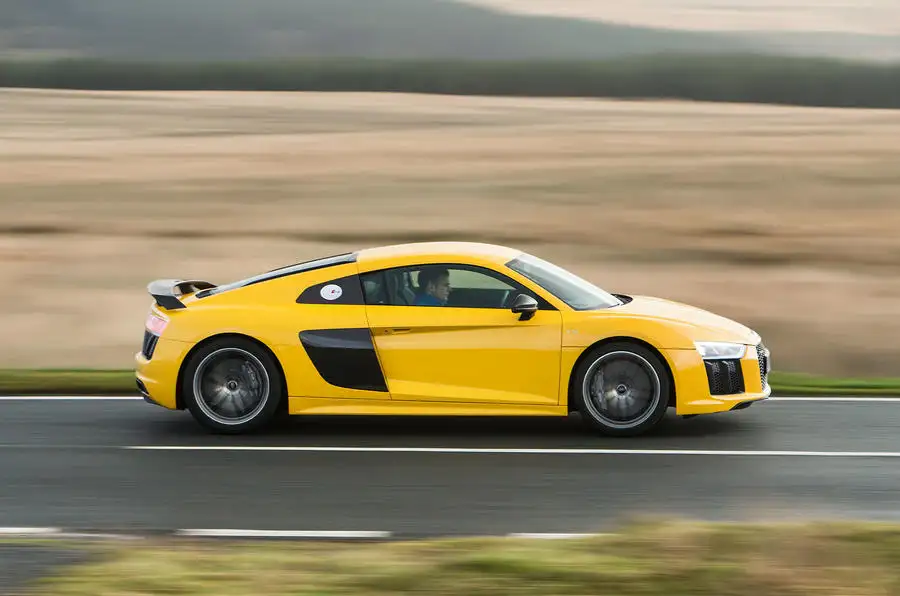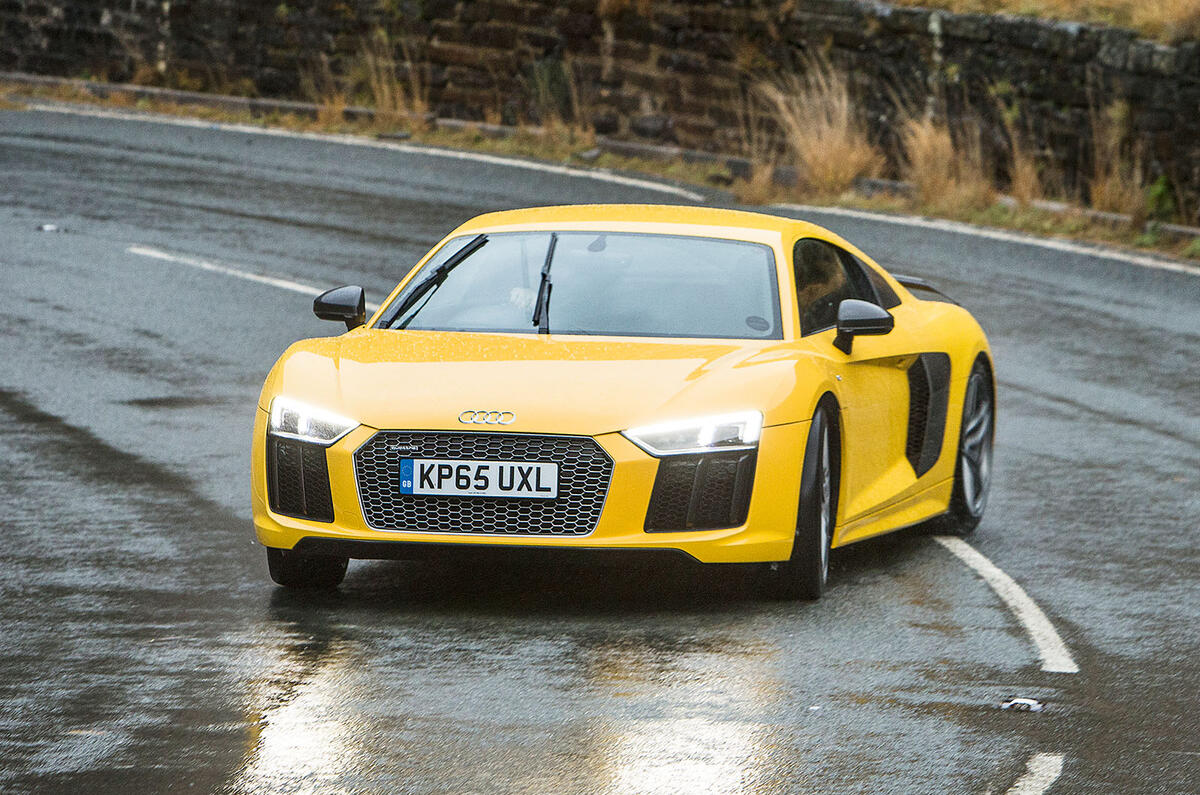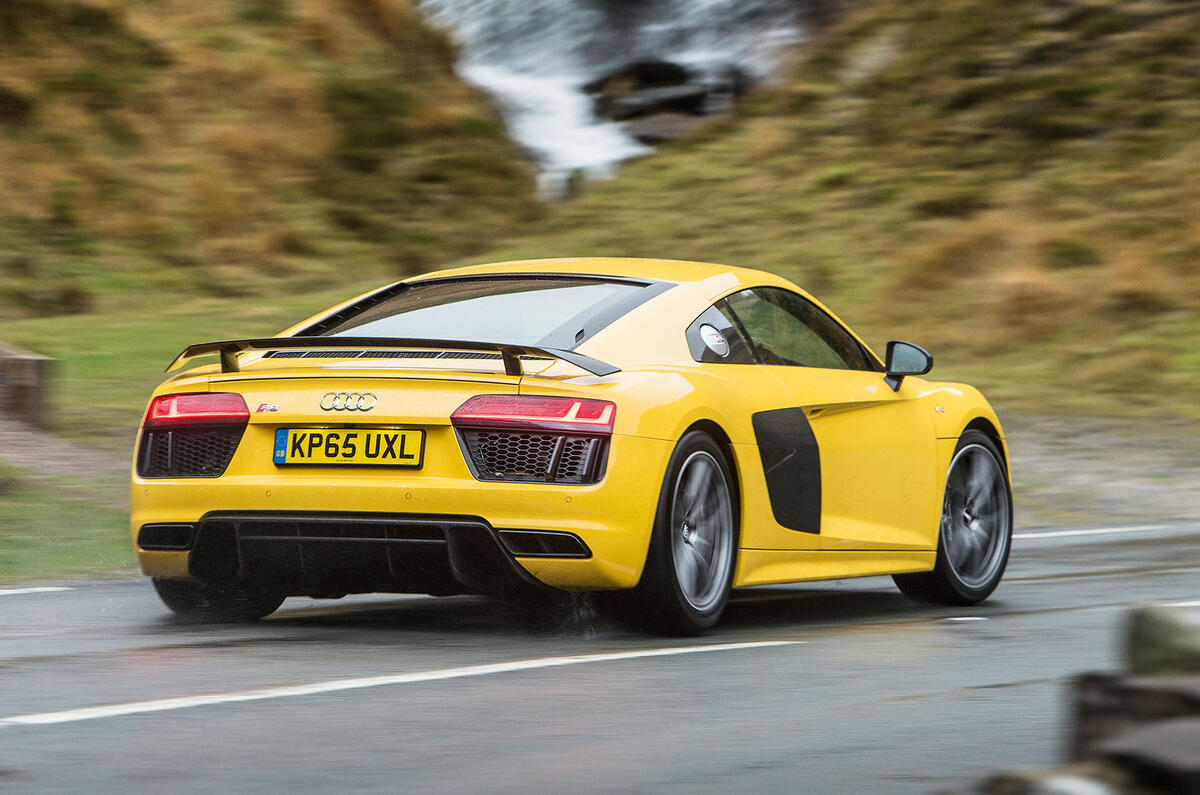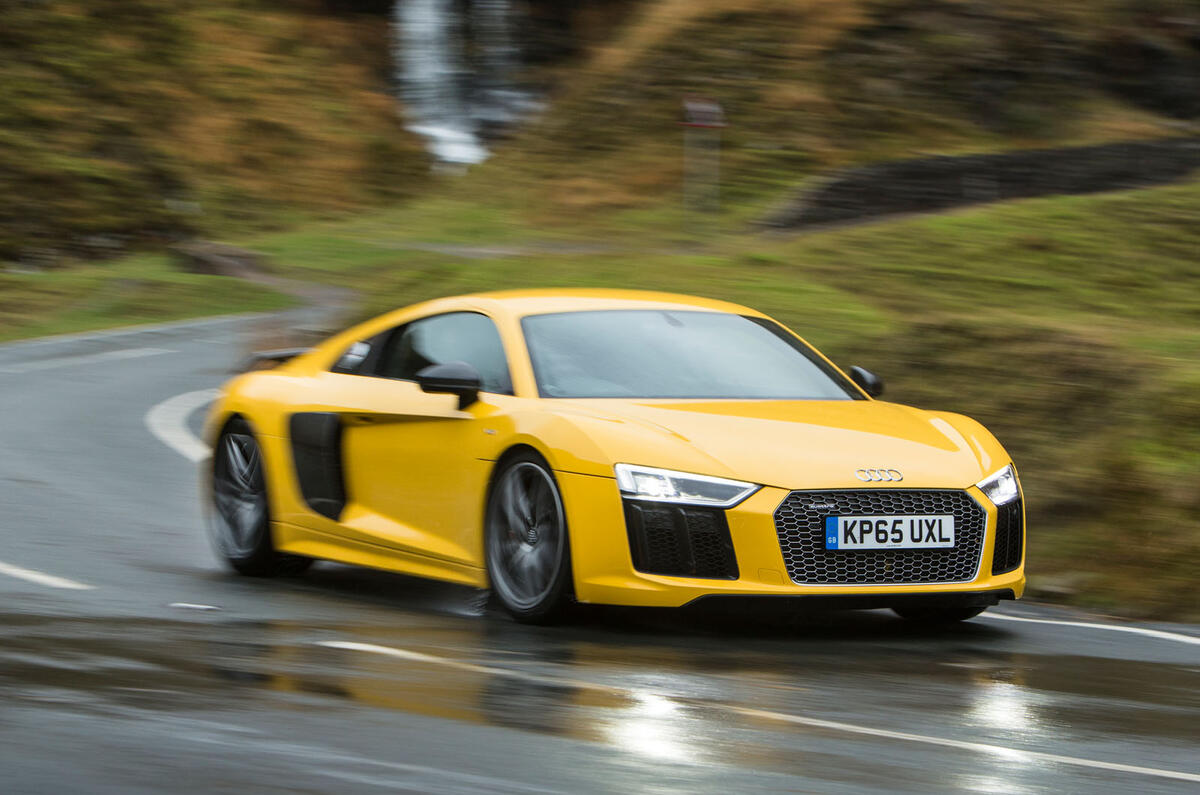Having been in possession of one of the simplest, most instantly gratifying and incorruptible driving experiences given to a sports car in recent times, the R8 couldn’t have gone through a starker change.
It is now as complicated to configure to your own preference and the demands of what’s under its wheels as any rival we can think of.
It was, at least, in the case of our test car, with its active damping and steering options. Even without them, the R8 V10 Plus comes with an Audi Drive Select system with five modes – Comfort, Auto, Dynamic, Individual and Performance – with the last of those intended mainly for circuit driving and split up into sub-modes for dry roads, wet roads and snow.
Really, only one of those modes does what it says on the tin particularly well and sets the car up optimally either for keen road or track driving – and it’s the Individual one, which is just a front for more complexity.
The R8’s firm springing and light, muted, variably direct steering somewhat undermine the idea that it can be driven as a comfortable GT, and those active systems only compound the car’s problems in Dynamic and Performance modes, exacerbating both the reactive firmness of the ride and hyper-sensitivity of the tiller.
Take time to experiment and you’ll find that you can engineer in a passable sense of measure to the ride and both greater consistency and a little feel to the steering, by dialling down the R8’s adaptive systems. What you end up with is a liveable, albeit still wearing, ride compromise and handling that combines agility with security more than adequately.


